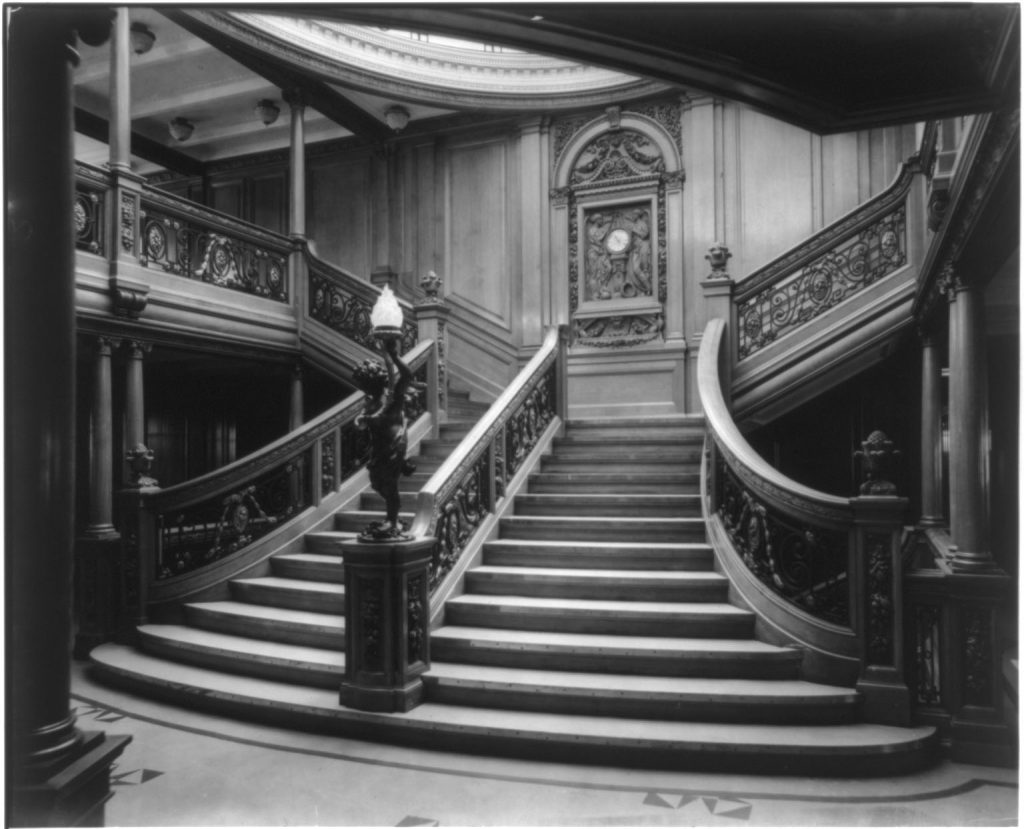In the early 1900s, there was major competition in the transatlantic passenger trade between the two leading lines in the business: Cunard and White Star. In 1906 and 1907, Cunard completed the construction of the Mauretania & the Lusitania who both set speed records crossing the Atlantic Ocean. In response to this, White Star set out to build 3 large sister ships that would be known for their comfort over their speed: The Olympic, Titanic & Britannic.

The most well known of these is of course the Titanic. After 2 years of construction, the Titanic was finally ready to embark on her maiden voyage from Southampton to New York across the Atlantic Ocean. Containing 840 cabins, a swimming pool, turkish baths, a gymnasium and many other extravagant amenities for first class passengers, the Titanic was the most luxurious cruise ship in the world at the time. Second class cabins were comparable to first class on most other similar ships at the time. With 2224 passengers including many wealthy and important people, the Titanic departed from Southampton on April 10th 1912.

The Titanic never made it to New York. Despite at least 6 iceberg warnings throughout the day leading up to the ship’s tragic demise, an iceberg was spotted ahead of the Titanic, directly in its path. Spotted too late to avoid a collision, the engines of the ship were reversed and the boat was turned, but only 30 seconds after the iceberg was noticed, the side of the Titanic scraped alongside it. Having torn a massive gash into the side of the ship, ripping open 6 compartments, there was no way the “unsinkable” ship would survive. The Titanic could only survive 4 flooded compartments.
At 2:20 AM on April 15th, 1912, the Titanic sank to the bottom of the Atlantic Ocean, killing over 1500 passengers. Only 31% of people on board survived.

A major reason so many people lost their lives when the Titanic sank can be traced back to issues surrounding lifeboats. Firstly, the Titanic was equipped to carry a total of 64 lifeboats, but the decision was made to only carry 20 onboard in order to not clutter the decks. This was above the legal requirements. Additionally, a lifeboat drill the day before had been cancelled, so the crew was not sure if the ship’s davits could handle filled lifeboats. They could. Because of this combined with confusion around the ‘women and children first’ rule, as well as an overall disorganized and haphazard evacuation, most lifeboats were launched with fewer than half their capacities.
Although the SS Californian was very close to the Titanic when it sank, they did not respond to distress flares and decided to ignore them. They had turned off their wireless for the night and could not be reached. Had they responded, many of the lives lost could have been saved. The RMS Carpathia came to the surviving passenger’s rescue. Nearly 2 hours after the Titanic sank, the ship arrived to save a little over 700 passengers that made it into lifeboats.
Sources
https://allthatsinteresting.com/titanic-survivors
https://www.youtube.com/watch?v=Yb3UUwc-TBc
https://www.youtube.com/watch?v=41B_BlwKS6U
https://www.youtube.com/watch?v=Rqbsrj6-FgM
https://www.history.com/this-day-in-history/unsinkable-titanic-sinks